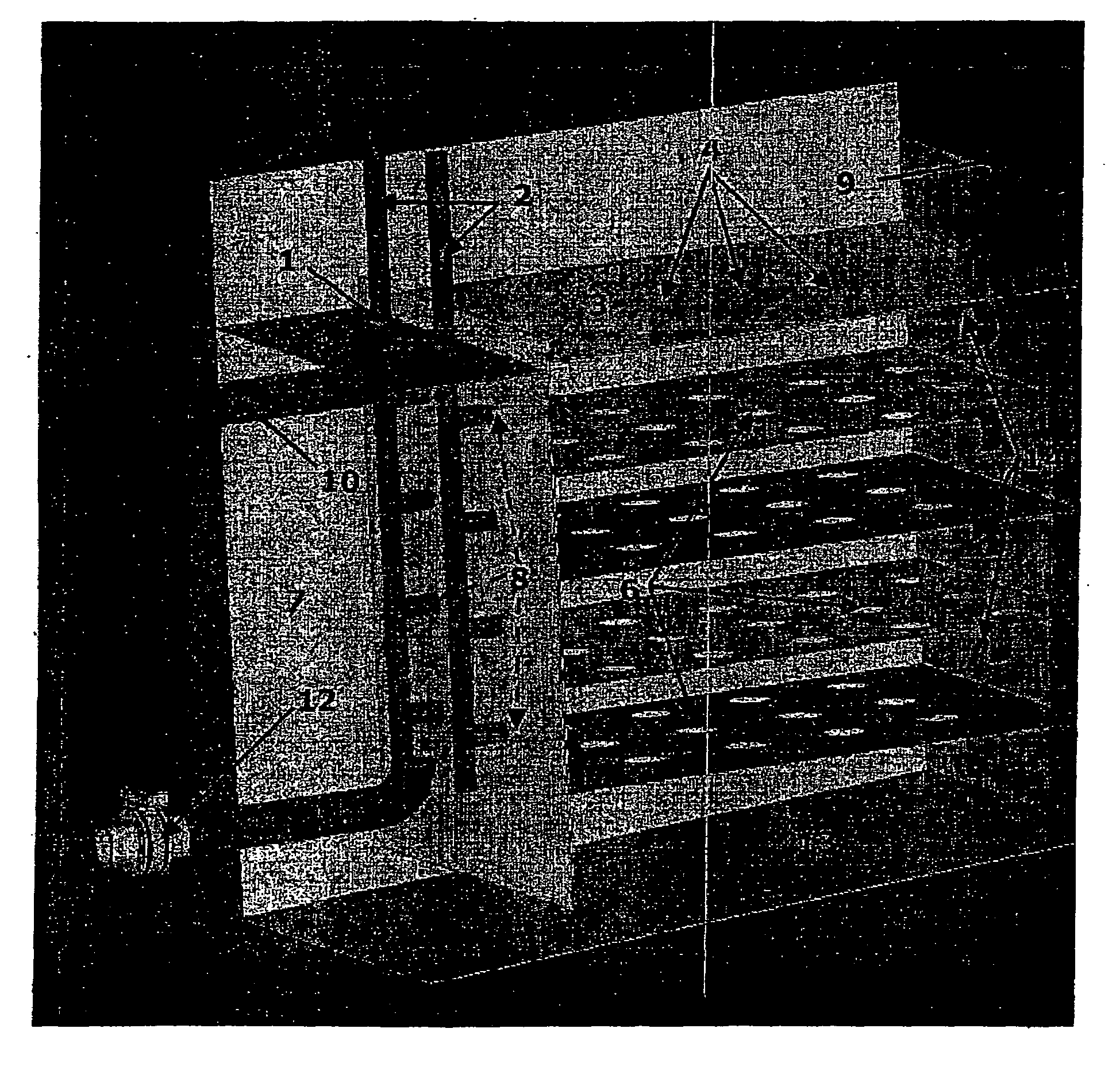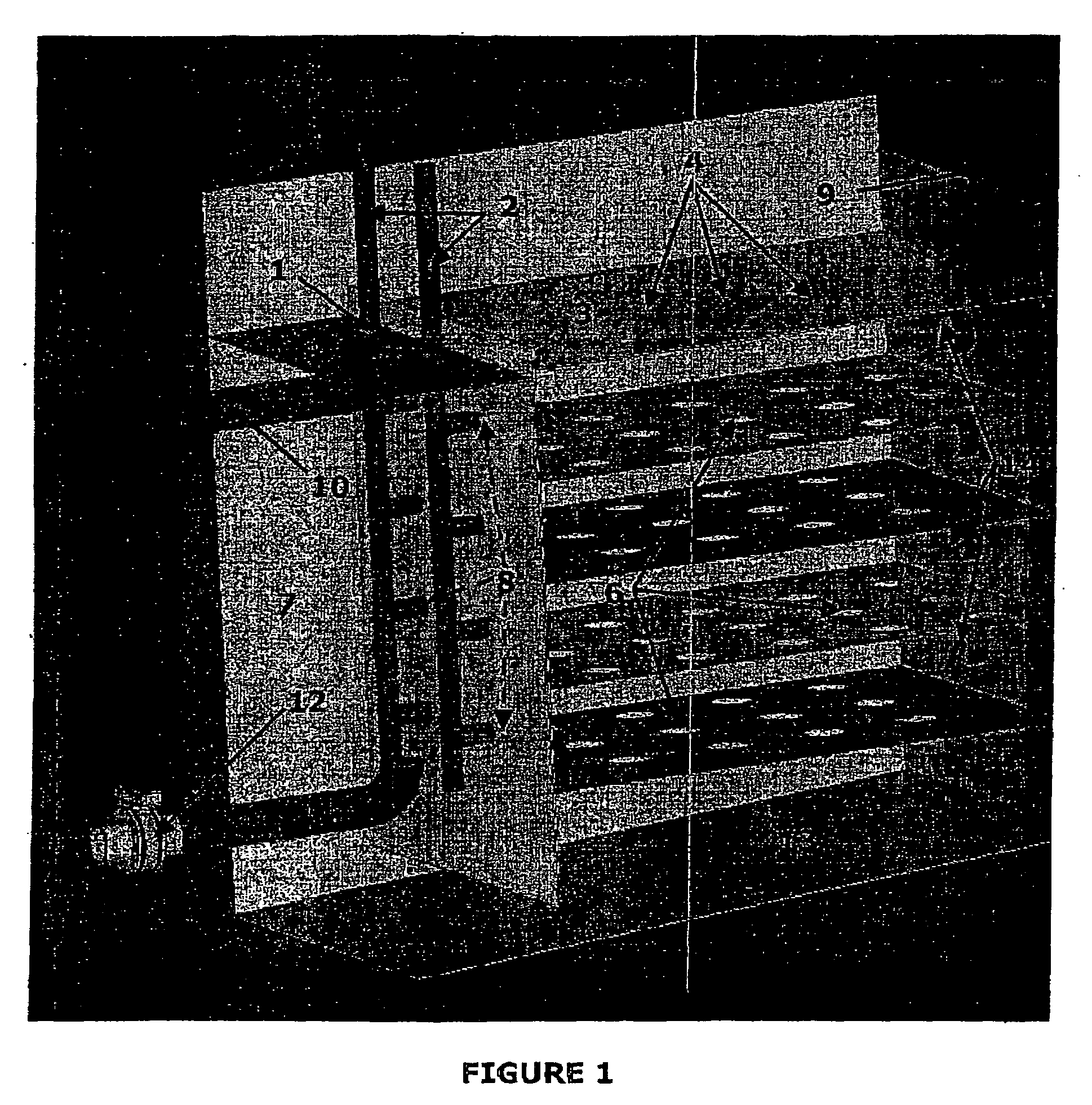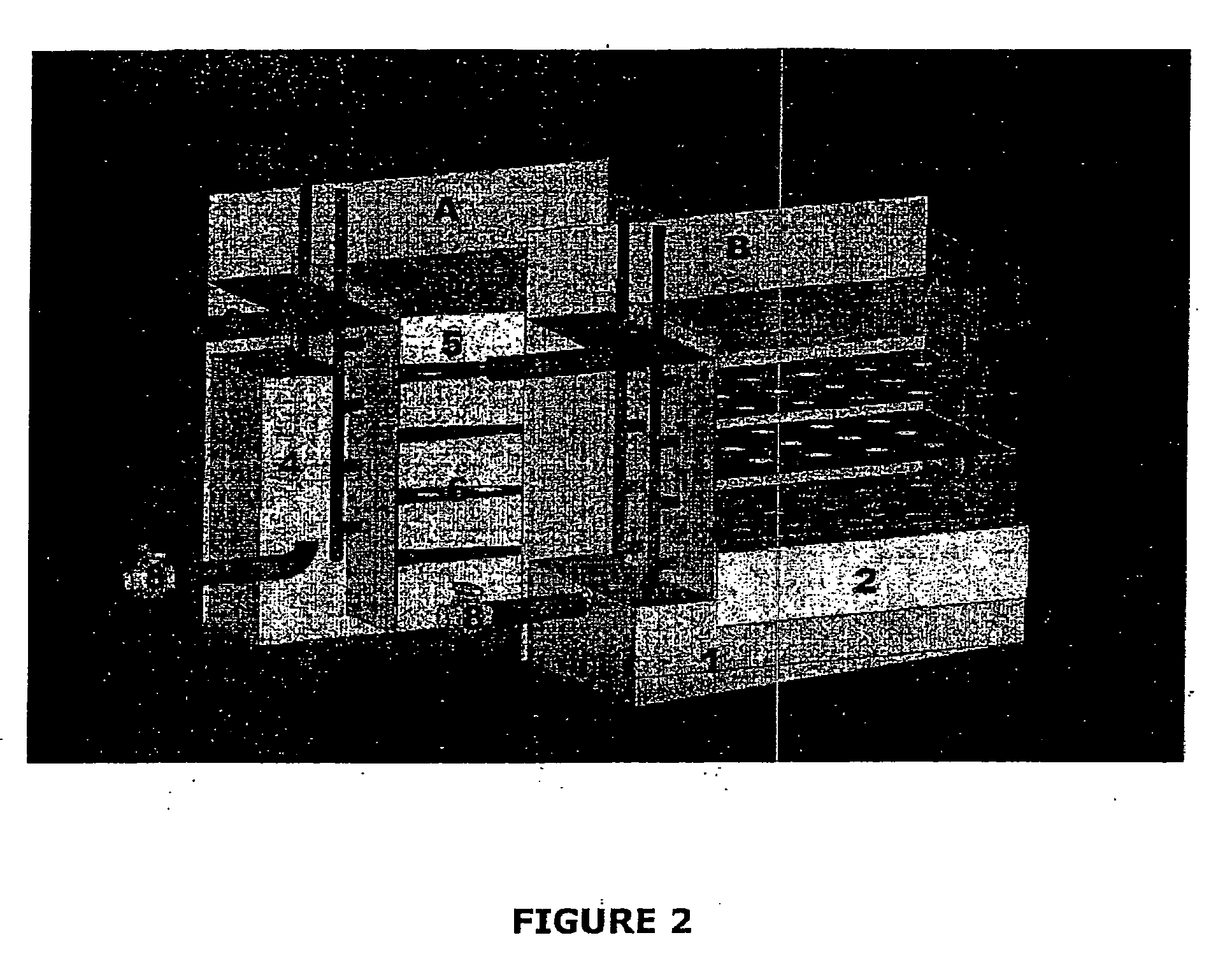Water filtration system and its use
a technology of water filtration system and filter, which is applied in the direction of water cleaning, sustainable biological treatment, biological water/sewage treatment, etc., can solve the problems of low dissolved oxygen and solids accumulation, biofilter type, and excessive nitrate levels in the culture system, so as to prevent water channeling and uniform microbial population
- Summary
- Abstract
- Description
- Claims
- Application Information
AI Technical Summary
Benefits of technology
Problems solved by technology
Method used
Image
Examples
Embodiment Construction
[0025] In the present context, the term “aquaculture” refers to a medium in which culturing of an animal species is performed in an aqueous environment. Examples of aquacultures are cultures comprised in fish raising tanks, in which fish such as salmon, halibut, cod or other species is reared for human or animal consumption. Other types of cultures of animal or even plant species in an aqueous environment are however compatible with the present definition.
[0026] The term “buoyant” refers to the tendency of an object to float or rise in a fluid. This is due to the well-known law of physics that items having an average density lower than that of the fluid medium in which they are placed, tend to rise to the surface of the fluid.
[0027] The term “aeration” refers in the present context to the process of delivering oxygen-containing air to a space in need thereof. The air may be ambient air, or it can be any appropriate gaseous mixture containing oxygen in sufficient quantity to provid...
PUM
| Property | Measurement | Unit |
|---|---|---|
| width | aaaaa | aaaaa |
| area | aaaaa | aaaaa |
| diameter | aaaaa | aaaaa |
Abstract
Description
Claims
Application Information
 Login to View More
Login to View More - R&D
- Intellectual Property
- Life Sciences
- Materials
- Tech Scout
- Unparalleled Data Quality
- Higher Quality Content
- 60% Fewer Hallucinations
Browse by: Latest US Patents, China's latest patents, Technical Efficacy Thesaurus, Application Domain, Technology Topic, Popular Technical Reports.
© 2025 PatSnap. All rights reserved.Legal|Privacy policy|Modern Slavery Act Transparency Statement|Sitemap|About US| Contact US: help@patsnap.com



